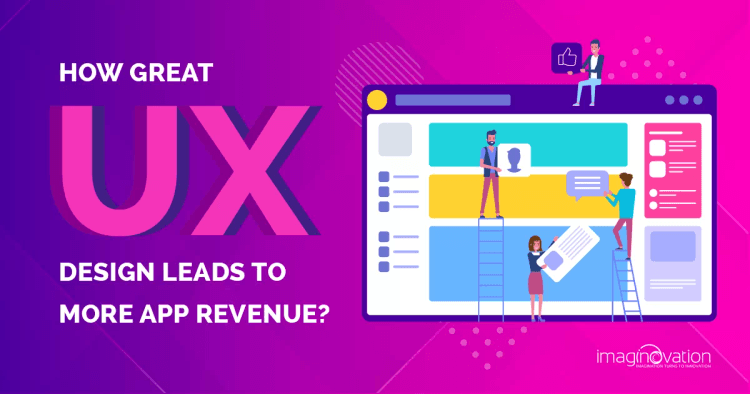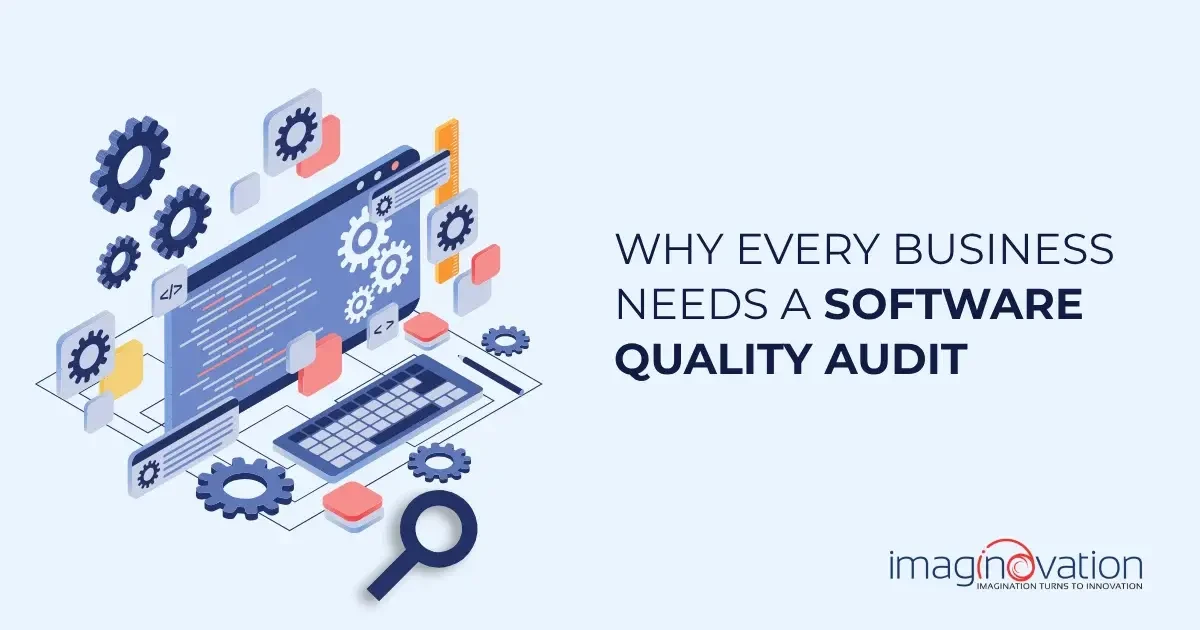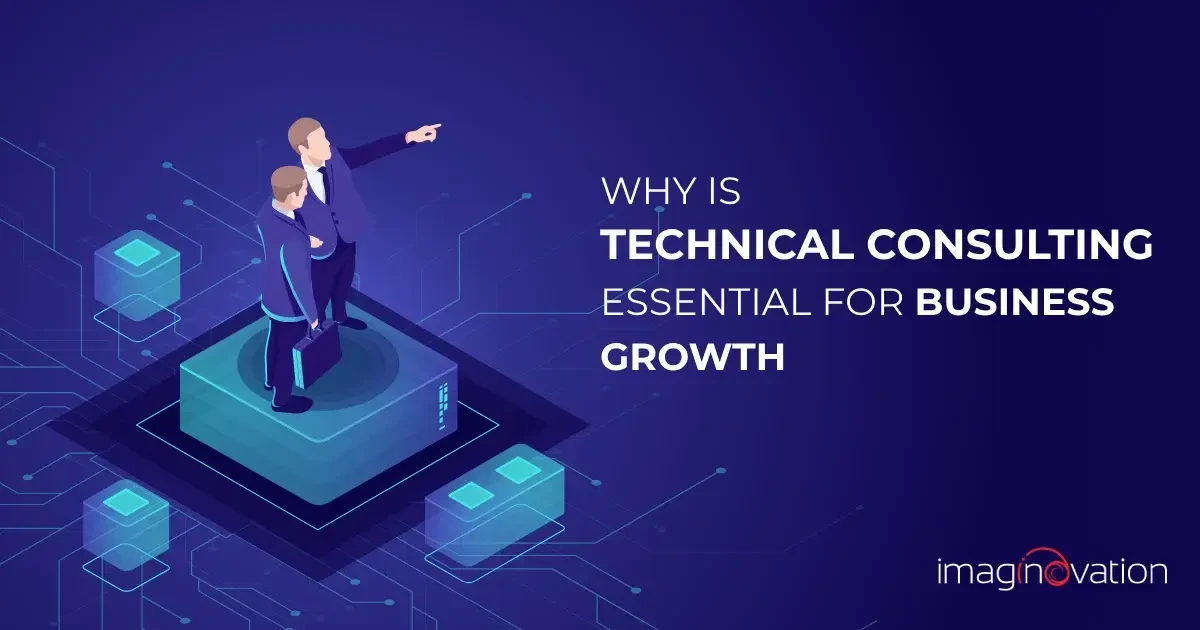The user experience design field is booming and for impressive reasons. User experience (UX) embraces all facets of your users’ interaction with your company’s products and services.
As C-suite executives, you may want to offer a compelling user experience (UX) to win the hearts of your customers. However, it is easy to make mistakes in optimizing UX for customer value, which can cost a lot.
Fortunately, in UX, problems and customer pain points are opportunities for success and a sound ROI on your investment. We understand your challenges around customer-centricity.
That’s why this blog walks you through how stellar mobile app user experiences can help you boost UX ROI. Let’s find out!
What Does UX Mean?
You may wonder—what’s the fuss about user experience.
Isn’t it all about offering a delightful user experience to meet the needs of the customer?

Well, it’s more than just that!
In practice, UX is mapping a customer journey, pain points and potential sources of delight, rather than just copying-and-pasting technical specs from one of your existing products.
A genuine user experience goes beyond offering customers what they say or want or even offering checklist features. It includes a seamless blending of the services of marketing, engineering, interface design, graphical design, and more.
UX embraces all facets of the end-users’ interaction with the organization, its products, and services. User experience design is a brilliant process that helps to curate meaningful and authentic experiences for users.
How UI and UX are different?
User Experience and User Interface (UI) are often used interchangeably, but they mean very different things.
Let’s take an analogy. Dain Miller, a Web Developer, aptly states UI is the saddle, the reins, and the stirrups. UX is the feeling you get when you are able to ride the horse. The key takeaway—UX and UI must go hand-in-hand.
How usability and UX are different?
It’s a myth to equate usability to user experience. Usability focuses on whether or not users can achieve tasks or goals with a product or service.
*Let’s take an **example**.*
A user may want to schedule a doctor appointment on a medical website. The fact that the user can schedule the appointment still does not capture the users’ journey, which may include the pain points or aha-moments.
Simply put, there is a lot to the full user experience, and it is vital to demystify the facets to contribute more to the field.
Let’s look at Peter Morville’s UX honeycomb, which explains the aspects beautifully.
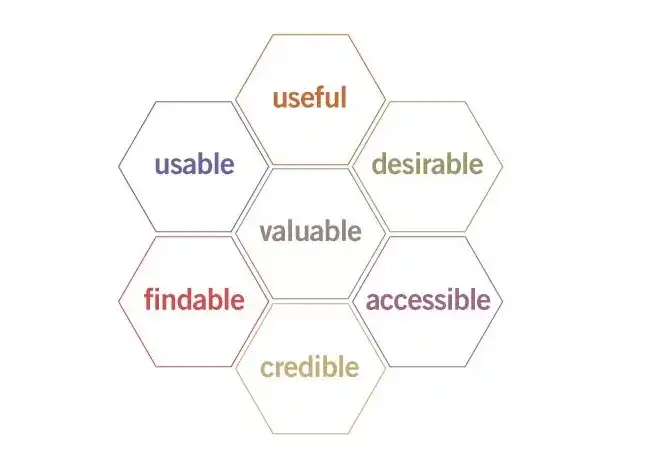
Peter Morville’s UX Honeycomb | Image Source
What can you do to curate a stellar app UX design?
Here are some questions that can help.
- Can you use it? A good UX helps achieve what you’ve set out to do. If users can’t use the product, then the product isn’t of much use to you.
- Does it cater to a need that you have? It’s straightforward that if a product does not address a want you have, you will not be interested in it.
- Can you find it? It is essential to find information. If the navigation is easy and intuitive, then it adds to the entire UX.
- Is it valuable? If a product adds some value to your life, the chances are that you will want it more often.
- Can you trust it? It is vital to building trust. When websites are safe, you will want to give them your credit card information to make purchases. It’s simple!
- Is it accessible to you? It is pertinent to have goods and services accessible by everyone, including users with disabilities.
All such elements contribute to a better UX landscape.
The Importance of a Good User Experience
Many successful companies realize the importance of UX. Examples such as Google, Amazon Kindle, the iPhone, etc., illustrate how UX is a significant product differentiator.
Companies that don’t realize the importance of UX may not get that extra advantage to outshine competitors. The bottom line—the quality of the UX has a very tangible business impact.
According to a report from Forrester, experts estimated moving from below-average customer experience to above-average would yield over $3 billion additional annual revenue for wireless carriers, more than $1 billion for hotels, $227 million for retailers, and $262 million for insurers.
So, good user experience results in savings and increased revenue.
On the other hand, a bad user experience can severely impact sales, costs, and satisfaction. Here’s a peek at why it’s vital to have a good UX.

- Increased Sales: Products and services that offer a brilliant UX typically sell better in contrast to those that provide a poor experience.
- Increased Customer Satisfaction and Loyalty: Good UX satisfies consumers and, in turn, boosts loyalty. It’s quite logical that satisfied customers are more likely to make repeat purchases.
- Reduced Development Cost and Time: When you develop the right solution right from the beginning, it saves time and costs.
- Increased Employee Satisfaction: When employees are part of an efficient ecosystem, it helps perform tasks and positively impacts their job satisfaction.
- Boosts Productivity: Poorly designed systems can reduce productivity, and on the other hand, improved processes can help perform tasks faster, improving productivity, and increasing sales and profits.
- Perform Financially Better: Companies that perform financially well are backed by C-suite executives who assess design performance as critically as they track revenues and costs. In short, when top-management is involved in the vision of design performance, it is leading by example.
- Instils responsibility: Many firms make user-centric design everyone’s responsibility and not a siloed function. When companies overcome isolationist tendencies, it can help to create immense value.
Claims about the promise of user experience design leading to more app revenue are abundant. For now, companies that decide to invest in UX come up with a robust view of the UX’s economic potential and how it will unfold.
How Does Creating Great UX Increase Business Bottomline?
Is your app driving away your potential customers?
The thought could be nightmarish, especially when you are looking forward to boosting your app revenue.
According to McKinsey & Company international consulting firm, experts found that best design performers boosted their shareholder returns and revenues at nearly twice the rate of their industry counterparts.
That’s huge!
Despite the immense business potential, many companies still need to understand what differentiates high-performing organizations. The insights can help to learn how your company can evolve and build a better bottom line.
How?
Let’s find out.
1. Emphasis on analytical leadership
It helps if the emphasis on UX design flows from the top-management. When C-suite executives take a user-centric strategy and make design a top-management issue, it helps.
The approach aids in assessing design performance in the same light as tracking revenues and costs.
What can you do?
Create a cohesive environment with collaborative processes where business leaders participate and encourage a design culture. When they are involved in the design process, it sets an example throughout the company by always placing the users first.
The conscious effort helps to maintain the baseline level of customer understanding throughout the C-suite level.
Measurement is the key to making excellent decisions and investing most effectively. Traditionally, measuring design performance and the business value of design has been complicated.
However, you can build apt metrics and processes that make a part of any future design specification. Plus, designers must realize the importance of involving the leadership level. The cohesive culture helps to create transparency and facilitates decision-making.
2. Consider UX design right from the beginning
The early stage of introducing UX is critical, as you can set goals right from the beginning. It helps to seamlessly set the vision through all processes and solve genuine problems with products and services early.
Approximately 50% of an enterprise’s engineering budget is spent resolving errors that could have been avoided. The errors include incorrect assumptions regarding user behavior, navigational glitches or unclear CTAs, and more.
What can you do?
Get into the UX way of thinking about goals and also identify key users. The process helps align with your app users’ views and collaborate better to achieve your business goals.
When you ensure that your app’s user design is planned effectively from the beginning, it alleviates any potential glitches in the future, needless to say, saving time and development costs.
3. Embracing full UX
Yet another brilliant initiative to boost UX design is to craft an integrated experience for potential customers across all touch points. Today, cross-platform services are becoming increasingly popular.
What can you do?
To understand the underlying needs of potential users in their environments, you can start with observation, conversation, and other qualitative types of research. The insights can help to take decisive action.
When customer experiences are treated as an integrated, multi-platform entity instead of unconnected instances, you will find ample opportunities for your business.
High-performing design companies always consider stepping out of their ecosystem and partner with various services from different backgrounds.
4. Foster Cross-Functional Talent
Picture this—all departments, working unitedly towards user-centricity! That’s incredible.
In fact, according to a McKinsey report, overcoming the isolation of different functions within the organization showed one of the strongest correlations with top financial performance.
What can you do?
When working on any app project, you can involve all kinds of stakeholders in the design, from business leaders to development and operations. The diversity of thought always brings in more value.
You can foster designers to become T-shaped. The characteristic can help them work and relate to many functions simultaneously wherein they can retain in-depth knowledge and practice in their own design skills.
Such abilities make a significant impact!
Another facet to focus on is bringing in some incentive system for your best designers.
Why?
According to McKinsey, the top 2% of employees make exponentially more outstanding contributions to all businesses.
You can bring in a plethora of initiatives to make the workplace culture featured with fun and respect for diversity. Most talented designers appreciate not just working on challenging projects but also enjoy good workplace culture.
5. Continuous iteration
Excellence isn’t a one time job!
It’s a continuous process of learning, testing, and iterating with users. The continuity can help to reduce risks early on and also discover great opportunities in developing breakthrough products. In that sense, it has a very tangible business value of design.
What can you do?
Try to curate a learning fiber in your organization. Keep user research at the heart of developing your app. You can combine qualitative studies (research) such as ethnographic interviews with quantitative methods like extensive sample size surveys (conjoint analysis).
The data insights can contribute to curating exceptional design work and generating proportionally higher app revenue.
6. Measure business value in key metrics
Picture this—you need to make some decisions.
What would you need?
That’s right!
Data is vital when it comes to evaluating business value. As C-suite executives, you can make decisions based on facts and statistical numbers.
What can you do?
With app development, you need data to evaluate how digital solutions affect your business. The data of the increased vital metrics is one of the best ways to see the UX’s business value.
7. Reassess old projects with users in mind
When you set goals for a new app project, it feels good to look at previous projects. It is good to learn from the hits and misses.
What can you do?
Sit down with your team and brainstorm—the exercise is excellent for setting the right mindset for your future projects. Here is a quick list of questions that you can ask:
- Did the app project meet your desired goals?
- Were they user-centric goals?
- What were the aha-moments?
- How can you improve the UX?
The insights drawn can help to contribute more value to your new project(s).
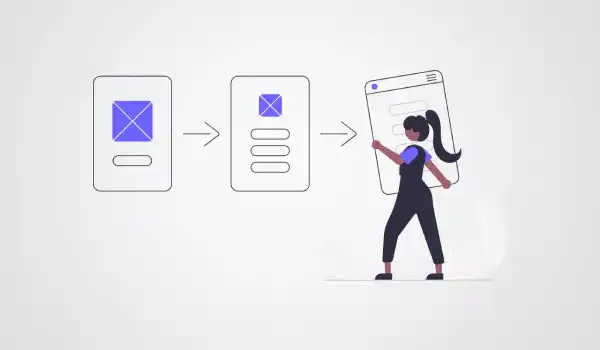
The Final Word
Good user experience is no more an extravagance today. High-performing companies have already accepted the norm and continuously aim to provide a good UX.
If you don’t have collaborative processes in place, it is an excellent time to start. You can also choose to partner with a proficient technology solution provider such as Imaginovation, who can help you with the right steps in the direction.
At heart, when you choose to offer well-designed systems, it spells revenue increases and decreases in costs, and that’s great for the health of your business.
Think about it!
Design Blockbuster Apps with Brilliant UX with Imaginovation
Are you wondering how to offer great UX for your potential app users? Get in touch with us.
We are an award-winning web and mobile app development company with a vast experience in developing stellar user experiences and exceptional digital solutions. We have helped many businesses and appreneurs turn their app ideas into a digital reality.
Talk to us.
